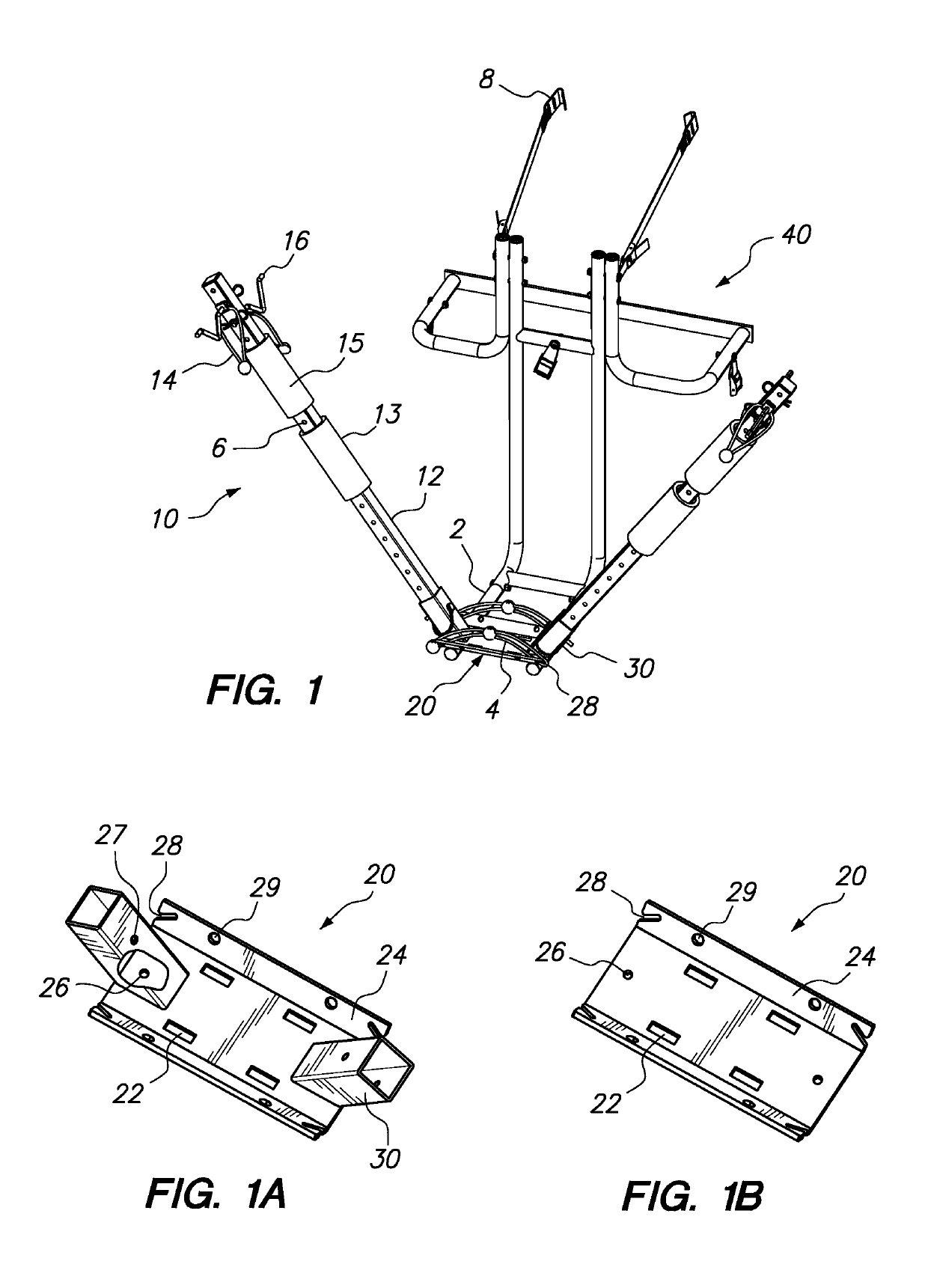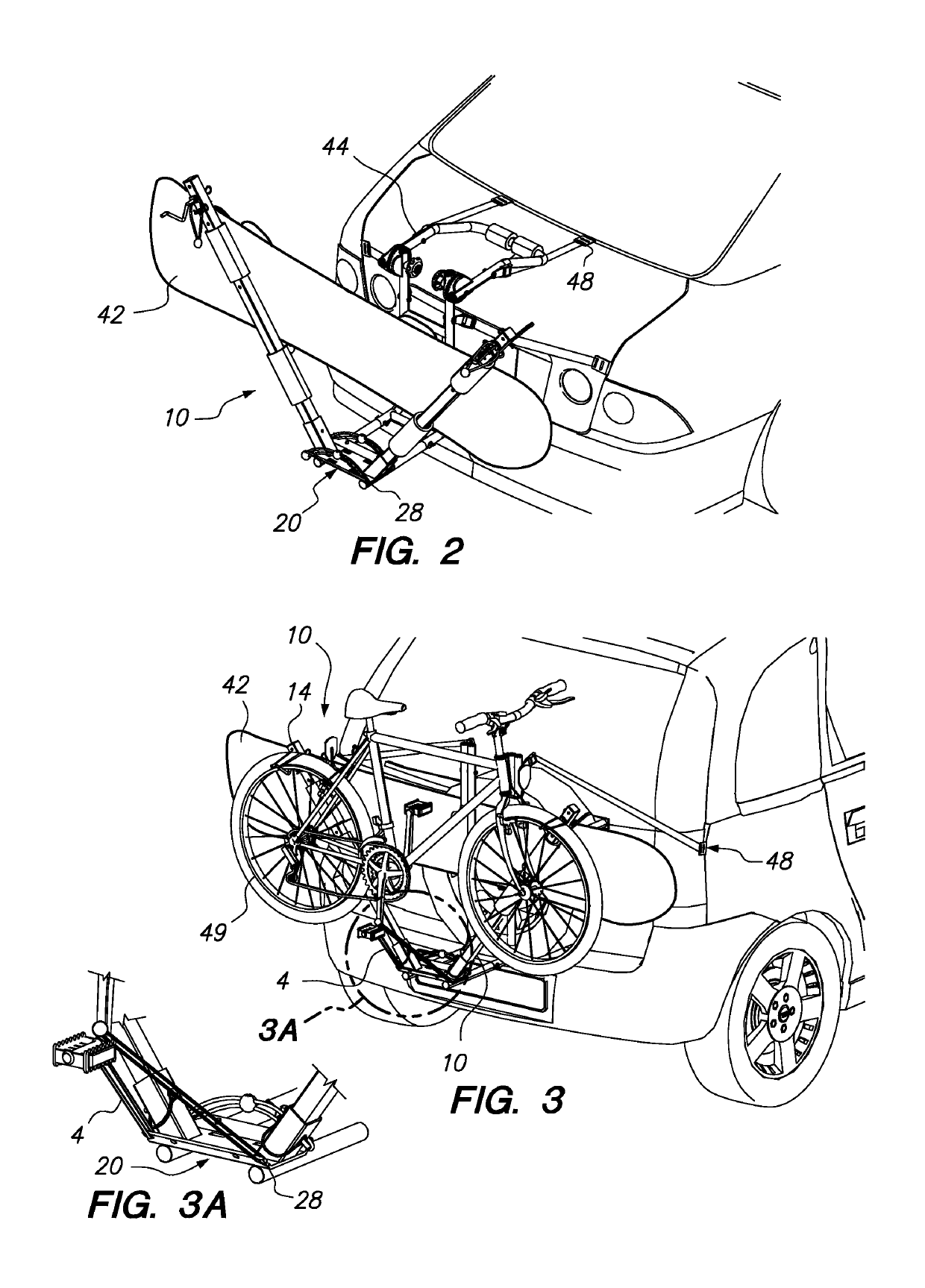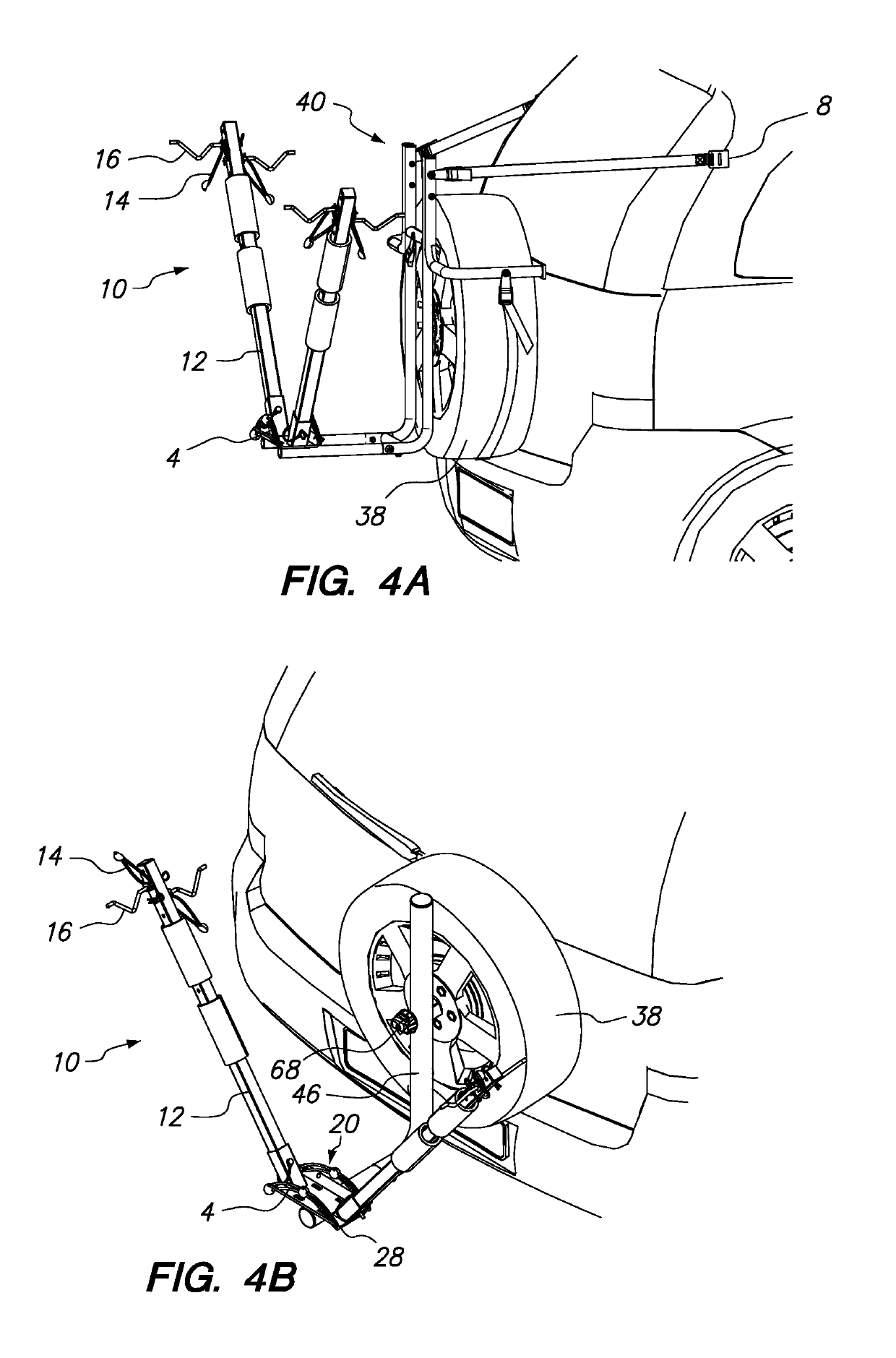Cargo carrier
a carrier and cargo technology, applied in the field of cargo carriers, can solve the problems of increasing the number of carriers, mounting components, increasing the cost of storage space, and reducing the efficiency of transportation, so as to facilitate convenient or efficient carrier positioning, maximize aerodynamic flow, and save fuel consumption of the vehicle
- Summary
- Abstract
- Description
- Claims
- Application Information
AI Technical Summary
Benefits of technology
Problems solved by technology
Method used
Image
Examples
Embodiment Construction
[0080]The present invention provides a cargo carrier 10 for mounting to a vehicle and carrying a range of equipment and other cargo, which may include, without limitation, recreational equipment such as cycles, skis, snowboards, surfboards, paddle boards, construction or landscaping equipment, or cases, bags or boxes holding smaller items. It is to be expressly understood that these exemplary embodiments are provided for descriptive purposes only and are not meant to unduly limit the scope of the present inventive concept. Preferred and alternative embodiments depicted in the drawings are illustrative of the numerous features of the present cargo carrier, including, without limitation, its versatile mounting mechanisms and cargo applications. Other embodiments of the cargo carriers and methods of use of the present invention are considered within the present inventive concept as set forth in the claims herein. For explanatory purposes only, the cargo carriers of the preferred embodi...
PUM
 Login to View More
Login to View More Abstract
Description
Claims
Application Information
 Login to View More
Login to View More - R&D
- Intellectual Property
- Life Sciences
- Materials
- Tech Scout
- Unparalleled Data Quality
- Higher Quality Content
- 60% Fewer Hallucinations
Browse by: Latest US Patents, China's latest patents, Technical Efficacy Thesaurus, Application Domain, Technology Topic, Popular Technical Reports.
© 2025 PatSnap. All rights reserved.Legal|Privacy policy|Modern Slavery Act Transparency Statement|Sitemap|About US| Contact US: help@patsnap.com



